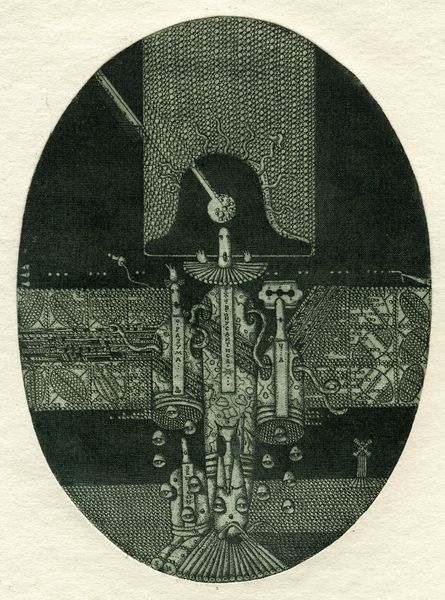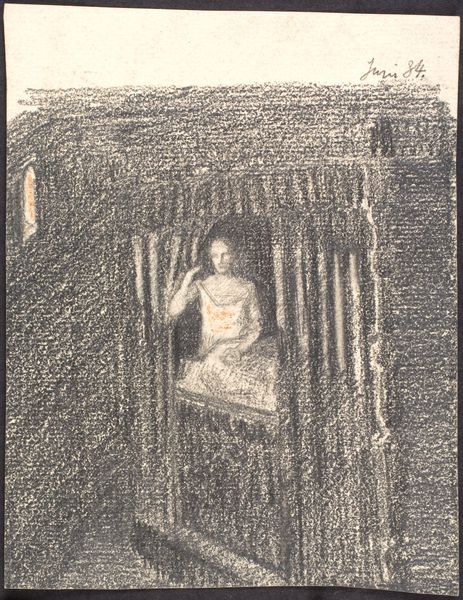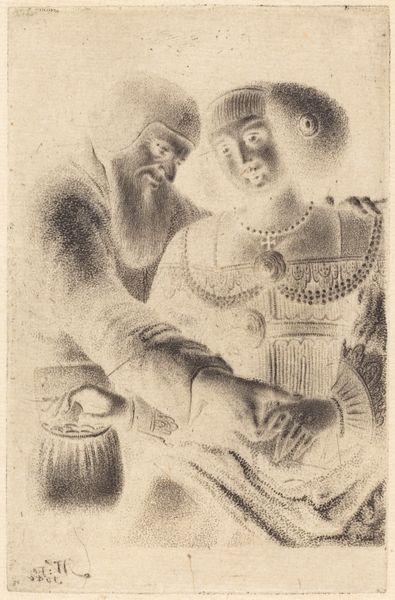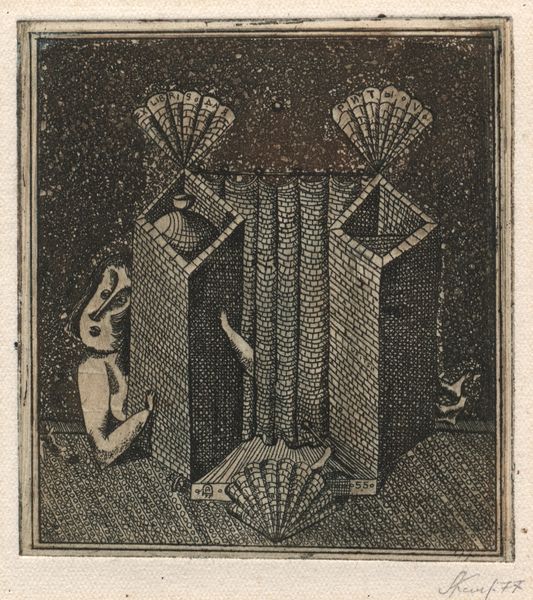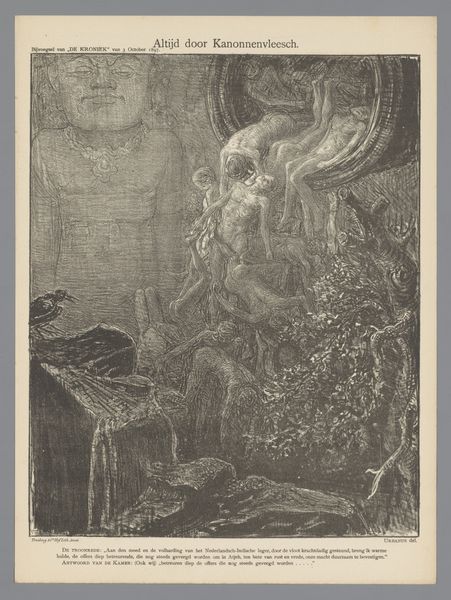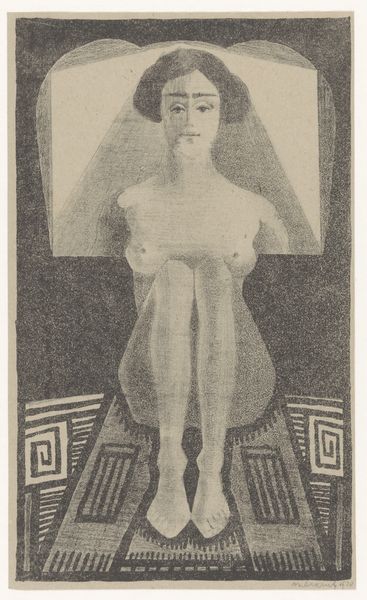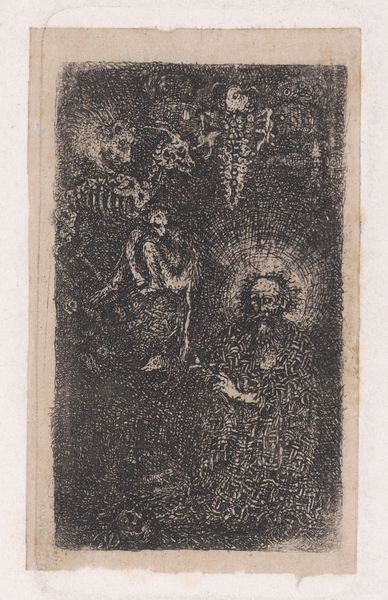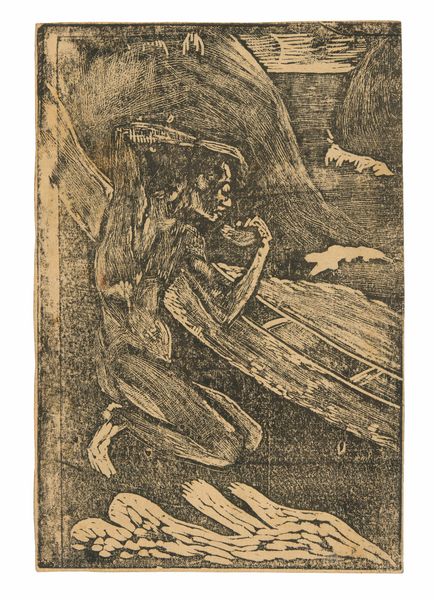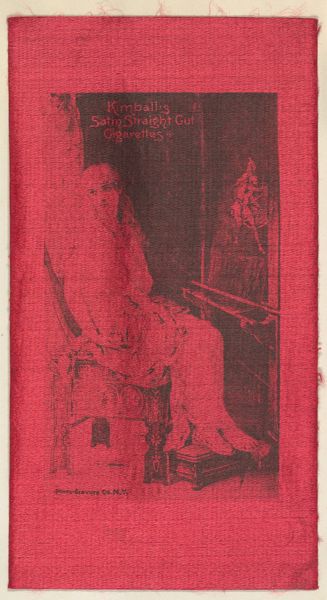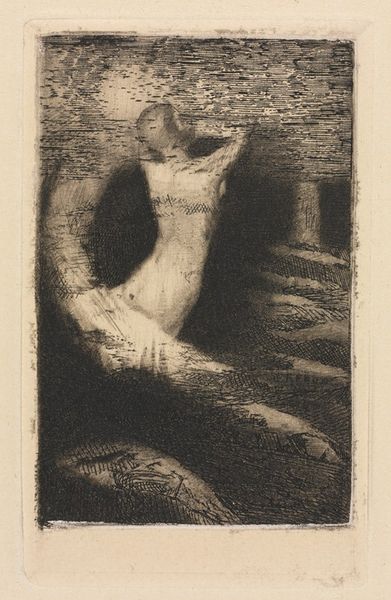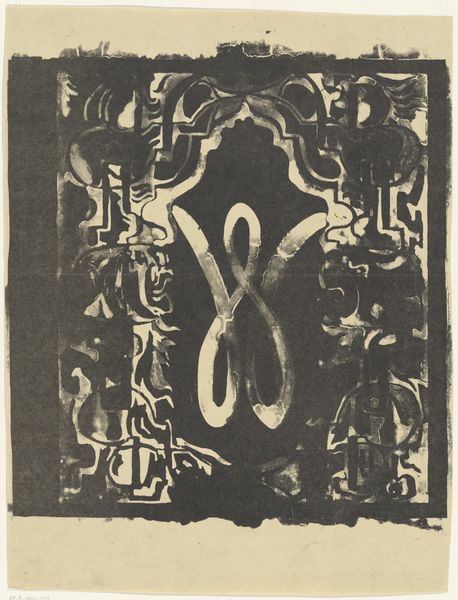
Cover/Frontispiece: verso of the second page, from To Edgar Poe 1882
0:00
0:00
drawing, lithograph, print, paper, ink
#
drawing
#
toned paper
#
lithograph
# print
#
etching
#
figuration
#
paper
#
ink
#
linocut print
#
line
#
symbolism
Dimensions: 164 × 116 mm
Copyright: Public Domain
Curator: Today, we're looking at Odilon Redon's lithograph from 1882, "Cover/Frontispiece: verso of the second page, from To Edgar Poe," currently held at the Art Institute of Chicago. What strikes you first about this print? Editor: The gaze, absolutely. It’s direct, unsettling, a little vacant, even. Makes me feel like I'm intruding on a very private, possibly melancholic moment. And then that peculiar wheel motif, gives the impression of something monumental but obsolete... time frozen in gears. Curator: Indeed. Considering Redon's interest in symbolism, it's fascinating to unpack those motifs through a materialist lens. Look at the production process—the use of lithography allows for rich tonal variations despite the limited color palette, lending it an ethereal, dreamlike quality but also keeping it relatively reproducible. Consider that context--how does access alter how the artwork exists in its time? Editor: The earthy tones give it a ghostly quality, like something recovered from an archaeological dig or perhaps conjured in an old photograph. The woman seems trapped between the stony solidity of classical architecture, possibly referencing Poe's aesthetic ideals, and this rather alien mechanical geometry. The choice of the lithograph medium and earthy tone may suggest its status as something dug up from the collective psyche. The figure is so lightly, delicately rendered it fades almost back into paper--as Poe himself seems to do from popularity until recovered by those attuned to certain registers... like Redon. Curator: Exactly, and that position also underscores the role of printed matter and distribution in shaping the cult of personality, like Poe's. By using a readily produced medium like lithography and using visual rhetoric, Redon himself performs the same work he depicts—memorialization through dissemination. This connects to the debates around mass culture during the late 19th century and the changing status of the artist. Editor: It’s as if Redon’s not just illustrating Poe, but engaging with the machinery—pun intended—of how we build, consume, and possibly deify, cultural icons. Even this imagined interaction participates in his legacy. This exploration into form feels really of its time, of OUR time, if you are like me. Curator: Precisely, its continued circulation continues that legacy. I appreciate your thoughts, especially on how the materiality underscores Redon's socio-artistic commentary. Editor: And I admire how your perspective adds another gear, reminding us to question not only *what* art conveys, but also *how* it does the conveying. A powerful, haunting piece indeed.
Comments
No comments
Be the first to comment and join the conversation on the ultimate creative platform.

